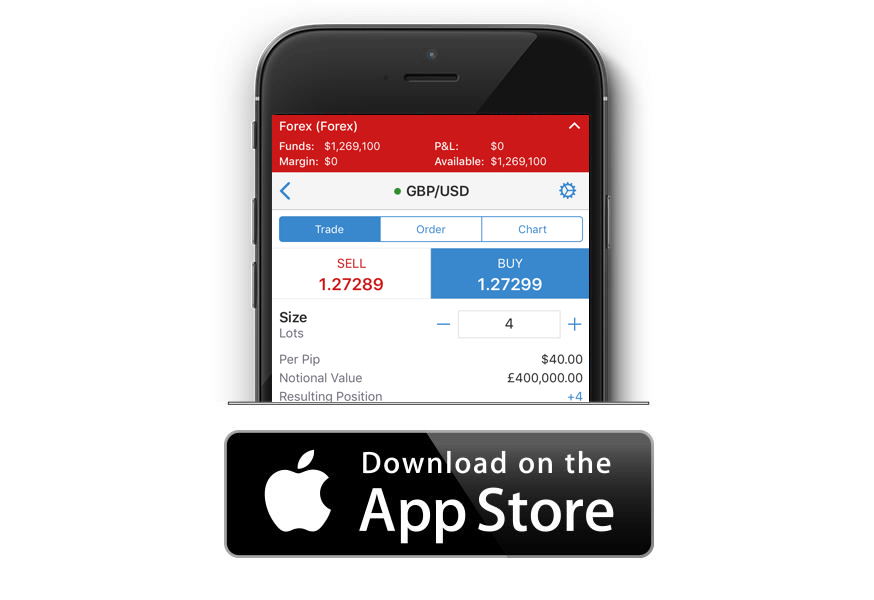
When customers are upsold or cross-sold additional products and services, this increases revenue for the business. Your forecasted/estimated/expected ARR would be the recurring revenue actually generated or expected to be generated in each month of the year. Different LTV models can inform decisions like how much you can pay to acquire a new user, the effects of losing users, and how changes to a product affect the sum-total revenue you can expect to bring in from a user. Customer churn is a direct reflection of the value of the product and features you’re offering to customers—making churn rate a valuable metric to track. Calculating ACV helps inform your strategy and guide how much you should be investing in sales and marketing efforts. Subscription businesses can be successful with either a high or low ACV; however, it’s important to know where your business is aiming.

The only difference between the two metrics is the period of time at which they are normalized (year vs. month). Thus, ARR provides a long-term view of a company’s progress, while MRR is suitable for identifying its short-term evolvement. Finance professionals, specifically CPAs, rarely need education on GAAP revenue, but many are new to the subscription business and need to understand how annual recurring revenue differs from GAAP revenue.
ARR (Annual Recurring Revenue): Business Meaning and Definition
For example, if a customer signs a four-year contract for $4000, divide $4000 (contract cost) by four (number of years) for an ARR of $1000/year. If a customer declines to renew a $6000 contract over two years, divide $6000 (contract cost) by two (number of years) for an ARR decrease of $3000. A business with 140% NRR that can keep performing at that level will eventually be a very large business.
- While ARR measures the value of recurring revenue at a single point in time, ACV normalizes that revenue across one or more years.
- While ARR, total revenue, and annual profit all speak to a company’s growth and profitability, they’re very different metrics.
- This is because the revenue considered in ARR is specifically subscription or contract based.
- Both of them can be used for the same purpose which is to calculate the average rate of the room.
However, in doing so, you’re reporting the cancellation in a different period. The cancellation should be recorded on Aug 1, the end date of the subscription (i.e. the renewal period). The accounting rate of return is a simple calculation that does not require complex math and is helpful in determining a project’s annual percentage rate of return. Through this, it allows managers to easily compare ARR to the minimum required return. For example, if the minimum required return of a project is 12% and ARR is 9%, a manager will know not to proceed with the project.
How do I calculate ARR?
Below we explain the differences, how to calculate them, and some other metrics you should also be tracking. Our new set of developer-friendly subscription billing APIs with feature enhancements and functionality improvements focused on helping you accelerate your growth and streamline your operations. If your business is struggling, learning what ARR is and how to increase it can mean the difference between failing or succeeding. While ARR does approximate revenue, it is still a normalization value, so you’ll be hard-pressed to find an ARR data field or function in any GL or finance system.
It’s an easy metric to look at to see the overall health of a product in terms of revenue and customer retention. A growing LTV means existing customers are happy and you will be giving you more money throughout their relationship with your company. A declining LTV indicates the company is making less from each customer and needs to make some changes. Your company should track ARR to measure overall growth and how much revenue you can expect in a year. While ARR measures the value of recurring revenue at a single point in time, ACV normalizes that revenue across one or more years.
What is Annual Recurring Revenue?
ACV, on the other hand, is the value of subscription revenue from each contracted customer, normalized across a year. While Annual Recurring Revenue is relatively easy to calculate, it is very important to remember that ARR only includes contractually obligated revenue, not one-time revenue from late fees, add-on services or special purchases. To perform core ARR calculations, it is easiest to start with a simple “status” or state spreadsheet including the basic information needed to report on the present state of each contract or subscription. This approach works well for a few dozen customers, but its value quickly evaporates as a company grows.
ACV looks at one customer in particular and sees what the expected payout over a year is. For example, if a customer signs a multi-year contract, e.g. a five-year deal with you for $50,000, then your ACV for a single year would be $10,000. However, much of this revenue may not be predictable and, unless supported by extensive history and financial analysis, might be unreliable for financial decisioning. With that in mind, when calculating Annual Recurring Revenue, we would expect to find a lower dollar figure than that of overall company revenue. Within the Indie Hackers community, it is a common metric used when presenting success of a project. Without support for ARR and cancellations in your finance system, most turn to Excel to track and measure ARR and churn.
Since subscription commitments can indicate the relationship customers have with your product, their willingness to agree to an ongoing relationship may be an indicator of their confidence in your brand or satisfaction with your brand. Conversely, a high number of customers who prefer non-contractual interactions may indicate that they require an additional “nudge” to commit to your service financially. Annual Recurring Revenue considers all the subscription-based revenue for the entire year. While this might seem as simple as multiplying all monthly subscriptions by 12, that’s not exactly how it works.
- That said, it is important to choose a timeframe that would be representative of overall business performance when calculating Annual Run Rate.
- While MRR is typically preferred by B2B businesses with monthly subscriptions (as well as B2C subscription businesses), it’s not uncommon for companies to use both metrics to represent their revenue.
- However, as the volume of data grows and the complexity of transactions increases, this becomes increasingly complicated.
- The goal with ARR is to determine what revenue can be assured for the purposes of financial projects.
From the investors’ perspective, the predictability and stability of ARR ensure that the metric can be used to compare the company’s performance against its peers, as well as to compare it with its own performance across time. Let’s say your SaaS startup generated $20 million in revenues in your last fiscal year. LTV is the total dollar amount you’re likely to receive from an individual customer over the life of their account with your product. Once you have your churn rate calculated, you need to deep dive into what’s causing it. To calculate Annual Recurring Revenue, simply divide the total contract value by the number of years. For example, if a customer signs a two-year contract for $8,000, divide $8,000 (the total contract value) by two (number of years) for an ARR of $4,000 per year.
Let ProfitWell Metrics do all the calculating for you
For this coming year, we are on pace to hit $17.5 million in ARR for the full calendar year. Mistaking ARR for cash can create a falsified image of how much money a business has. That being said, it is never an either/or situation when it comes to ARR and MRR, as the former gives a long-term picture while the latter offers short-term insights. As I alluded to earlier, there aredozensof subscription acronyms and metrics. Calculating ACV and ARR results in different numbers, so when should you use each metric? To be frank, ACV isn’t a super-useful metric on its own, but pairing it with other SaaS metrics can provide some valuable insights.

Both of them can be used for the same purpose which is to calculate the average rate of the room. However, ARR can also be used to measure the average rate for a longer period of time (weekly, monthly) while ADR may only be used to measure the average rate of one day. In this context, “ARR run rate” typically refers to the most recently completed month’s monthly recurring revenue, or MRR, multiplied by 12 (months). In this example, your business would have $12 million in ARR, or annual recurring revenue, for the prior fiscal or calendar year (depending on the timeframe one references or implies with their usage of the term). ARR, or annual recurring revenue, refers to a specific dollar (or other currency denomination) amount of your revenues that came as a result of some kind of subscription or recurring contractual obligation. ARR is the amount of revenue that a business expects to generate every year on a recurring basis.
Another common mistake is when businesses calculate ARR by adding up the total revenue for the last 12 months. But in reality, ARR is a forward-looking metric, and it takes into account how much revenue you can expect in the future, not how much you generated last year. Monthly Recurring Revenue (MRR) is the predictable recurring revenue earned from subscriptions in a particular month. There are several different types of MRR, such as new MRR, upgrade MRR, expansion MRR, and contraction MRR.
In all actuality, ARR considers only those contracts that last for at least a year, if not more. If it renews, the new term’s start date is August 1, therefore the renewal date for ARR calculations is August 1. If it cancels, you may be tempted to report the cancellation as the date of cancellation.
The Most Important SaaS Metrics In 2023 with Monday CEOs and … – saastr.com
The Most Important SaaS Metrics In 2023 with Monday CEOs and ….
Posted: Mon, 07 Aug 2023 13:45:57 GMT [source]
If your finance person is a bookkeeper (as is common in early-stage businesses), they will likely need education on both topics, as will managers in sales, marketing, and product functions. ARR is an invaluable metric for measuring the success of your SaaS business. In addition to calculating revenue for a one-year period, it also helps predict future growth and revenue based on the value of renewals and cost of churn, allowing you to manage expenses more easily.
Annual recurring revenue is often used in B2B subscription business when the minimum subscription term is one year. It also tends to be used by businesses with multi-year terms, and those with lower transaction volume and higher transaction value. While MRR is typically preferred by B2B businesses with monthly subscriptions (as well as B2C subscription businesses), it’s not uncommon for companies to use both metrics to represent their revenue.
With that in mind, ARR can be used to measure the health of a subscription-based business, such as a Software as a Service company, by measuring the revenue on which the company can rely over the course of the year. Annual Recurring Revenue, or ARR, is a subscription performance metric that shows the revenue anticipated every year arr stands for over the life of a subscription or contract. As a subscription business grows and experiments with pricing and packaging, it’s common to introduce new contract terms. However, you can experience an “MRR-like” jitter issue if your term subscriptions run for non-standard lengths, such as 15 months or 30 months and eight days.

